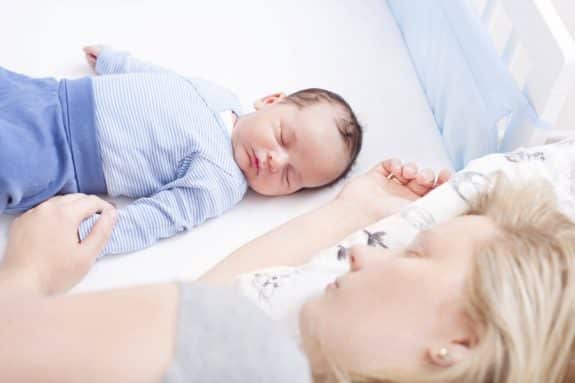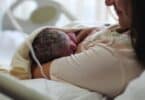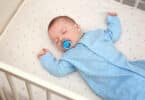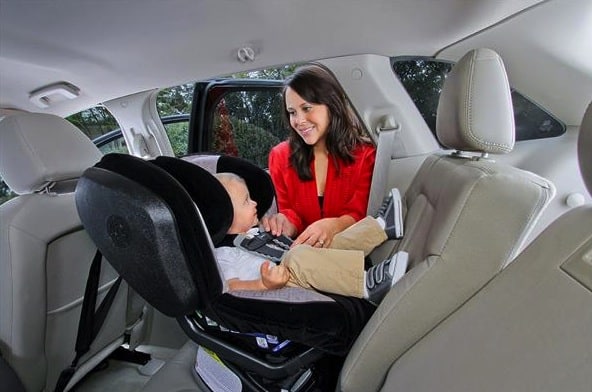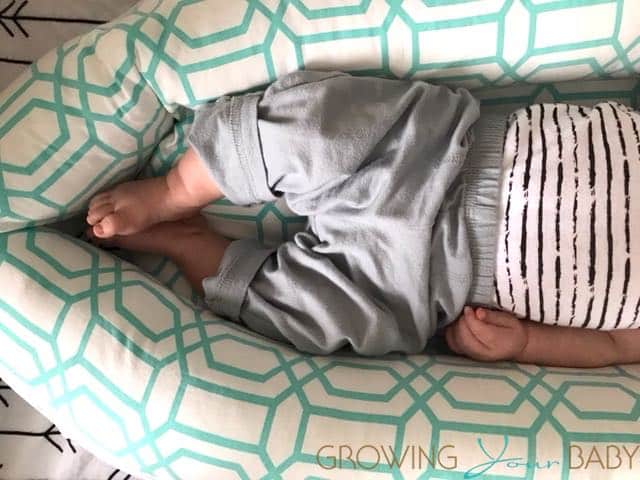It is estimated 3,500 infants die each year in the United States from sleep-related deaths, including sudden infant death syndrome (SIDS) and accidental suffocation and strangulation.
To keep their baby safe while sleeping it has been recommended they are placed on their back and in a space free of toys, blankets and pillow. Now, in a new policy statement by the American Academy of Pediatrics, parents are being asked to have their infants sleep in the same bedroom – but on a separate surface, such as a crib or bassinet, and never on a couch, armchair or soft surface — to decrease the risks of sleep-related deaths.
Recommendations call for infants to share their parents’ bedroom for at least the first six months and, optimally, for the first year of life, based on the latest evidence.
The report, published in the November 2016 issue of Pediatrics (online Oct. 24), includes new evidence that supports skin-to-skin care for newborn infants; addresses the use of bedside and in-bed sleepers; and adds to recommendations on how to create a safe sleep environment.
“We know that parents may be overwhelmed with a new baby in the home, and we want to provide them with clear and simple guidance on how and where to put their infant to sleep,” said Rachel Moon, MD, FAAP, lead author of the report. “Parents should never place the baby on a sofa, couch, or cushioned chair, either alone or sleeping with another person. We know that these surfaces are extremely hazardous.”
AAP recommendations on creating a safe sleep environment include:
- Place the baby on his or her back on a firm sleep surface such as a crib or bassinet with a taut sheet.
- Avoid use of soft bedding, including crib bumpers, blankets, pillows and soft toys. The crib should be bare.
- Share a bedroom with parents, but not the same sleeping surface, preferably until the baby turns 1 but at least for the first six months. Room-sharing decreases the risk of SIDS by as much as 50 percent.
- Avoid baby’s exposure to smoke, alcohol and illicit drugs.
Skin-to-skin care is recommended, regardless of feeding or delivery method, immediately following birth for at least an hour as soon as the mother is medically stable and awake, according to the report.
Breastfeeding is also recommended as adding protection against SIDS. After feeding, the AAP encourages parents to move the baby to his or her separate sleeping space, preferably a crib or bassinet in the parents’ bedroom.
“If you are feeding your baby and think that there’s even the slightest possibility that you may fall asleep, feed your baby on your bed, rather than a sofa or cushioned chair,” said Lori Feldman-Winter, MD, FAAP, member of the Task Force on SIDS and co-author of the report.
“If you do fall asleep, as soon as you wake up be sure to move the baby to his or her own bed,” she said.
“There should be no pillows, sheets, blankets or other items that could obstruct the infant’s breathing or cause overheating.”
While infants are at heightened risk for SIDS between the ages 1 and 4 months, new evidence shows that soft bedding continues to pose hazards to babies who are 4 months and older.
Other recommendations include:
- Offer a pacifier at nap time and bedtime.
- Do not use home monitors or commercial devices, including wedges or positioners, marketed to reduce the risk of SIDS.
- Infants should receive all recommended vaccinations.
- Supervised, awake tummy time is recommended daily to facilitate development.
The AAP recommends that doctors have open and nonjudgmental conversations with families about their sleep practices. Media outlets and advertisers may also play a role in educating parents by following safe sleep recommendations when presenting images and messages to the public.
“We want to share this information in a way that doesn’t scare parents but helps to explain the real risks posed by an unsafe sleep environment,” Dr. Moon said. “We know that we can keep a baby safer without spending a lot of money on home monitoring gadgets but through simple precautionary measures.”

